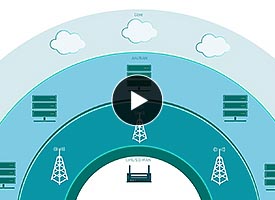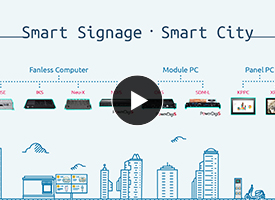Giải pháp
Tin tức
xem thêm >188 máy tính công nghiệp NISE3800E và NISE3900E triển khai trong ứng dụng chuyên dụng
Máy tính công nghiệp lắp đặt trên các phương tiện...
Tích hợp máy tính chuyên dụng trong hệ thống giám sát trạm quạt thông gió ở hầm lò khai thác than
Hiện nay, nhiều mỏ than hầm lò ở Việt Nam...
Máy tính công nghiệp có quạt có thực sự lọc được hết bụi với thiết kế AirFilters?
Máy tính công nghiệp có quạt là thuật ngữ dùng...
Giải pháp demo
xem thêm >
Mạng mở rộng 5G cấp độ nhà khai thác
NEXCOM bắt tay vào sự phát triển các giải pháp...
CPS Gateway Solution

Many manufacturers are eager to tap the power of big data in order to increase competitiveness, improve the bottom line, and anticipate trends. They are exploring the Internet of Things (IoT), which facilitates communications between all types of field devices and enables manufacturers to act upon decisions derived data analytics. However, a major challenge is gaining access to field data, made more difficult by field devices that use different Fieldbus protocols, run independently, or lack connectivity.
Helping to overcome communication barriers amongst various field devices, including machinery, robots, PLCs, and sensors, NEXCOM CPS Gateway series, as shown in figure 1 provides cross-protocol communication capabilities, among many others, help manufacturers increase operations efficiency, reduce maintenance costs, and improve the bottom line and competitiveness.
Solution Overview
NEXCOM CPS series communicate downstream to manufacturing modules over various Fieldbus protocols and upstream to an on-premise SCADA system or to the cloud (or data center) via LAN, Wi-Fi, or 3G/4G networks. At the same time, it supports serial communication and Fieldbus protocols to devices, allowing it to aggregate all types of downstream data. Given the fact that different communication protocols are used factory to factory, the CPS series can interface to different types of Fieldbus modules and support many Fieldbus protocols, including PROFINET, PROFIBUS, EtherNet/IP, DeviceNet, OPC UA, and Modbus. This capability enables the CPS series to act as a Fieldbus data concentrator and provide the last-mile connection for field automation devices. As a result, manufacturers can build a Factory-of-Things that integrates PLCs, remote I/Os, and legacy field devices across different control subsystems, and sends field data to the cloud for big data analytics and remote monitoring of factory operations.
.jpg)
Addressing the computation, communication, and control requirements in manufacturing, these embedded computing platforms integrate the power-efficient Intel® Atom™/Celeron® processors. The multi-core architecture of Intel® Atom™ and Celeron® processors equips the CPS series with ample computing performance to collect and process input data and command field devices to take appropriate actions. The CPS series are available with up to quad-core computing power to accelerate response time, control a large volume of field devices, and perform more complicated control schemes.
The CPS series may run the Intel software stack, developed in collaboration with McAfee and Wind River. These series can connect to legacy and new industrial devices, thereby enabling seamless and secure data flow between field devices and the cloud. The Intel software stack integrates technologies and protocols for networking, embedded control, enterprise-grade security, and manageability on which application-specific software can run.
Solution Benefits
Open standard infrastructure and IoT technologies NEXCOM can help manufacturers achieve their major objectives:
- Improve Operations Factory staff can easily keep an eye on field devices when SMS alerts are sent to their smartphones by a local or remote management service, and field devices can also be monitored, configured, and serviced remotely. These features enable the staff to address device issues more quickly and save time.
- Strengthen Security Barriers Data at rest or in transit is protected by a combination of data encryption, application whitelisting, secure sockets layer (SSL) certificates, and secure boot of devices. From field device to cloud, software- and hardware-based security mechanisms provide multiple safeguards to better protect manufacturing data and intellectual property (IP).
Technology
Connectivity
NEXCOM CPS series are designed to be the conduit between the physical world and the cyber world. The physical world consists of cyber-physical systems (CPS), which refers to a new generation of systems with integrated computational and physical capabilities that can interact with human processes in new ways (e.g., augmented reality, wearable devices). The CPS series provide the interoperability necessary for CPS and set up a solid foundation for Factory-of-Things operations, transforming a factory to a Smart Factory without a costly overhaul. CPS systems are typically closed, but through the use of IoT technologies that provide a cyber-physical bridge, these systems can connect to the cyber world. The ability to interact with and expand the capabilities of the physical world through computation, communication, and control is a key enabler for future technology development.
Control and Analytic Workloads
In addition to providing connectivity, the CPS series have sufficient computational power to run control and analytic workloads, reducing the amount of data that needs to be sent to the cloud for processing. When employed in pharmaceutical manufacturing, for example, the CPS series can monitor the pressure level of a reactor when binding agents are added to deliver a drug in pill or tablet form. As soon as the pressure reaches a certain level, the CPS series can close inlet valves and activate a motor to spin an impeller to start the blending process. All is done automatically without manual effort.
Manageability
Factory staff is typically on the go, which means they can be more productive if they can manage factory devices a smartphone or other mobile device. With this in mind, the CPS series is available with a mobile HMI App, which provides remote access to real-time monitoring and control of factory operation. Starting a new manufacturing process only takes a few taps on a mobile device. Instead of being confined to desks in a factory control room, staff members can check a field device connected to the CPS series – anytime, anywhere.





 NHÀ PHÂN PHỐI
NHÀ PHÂN PHỐI

